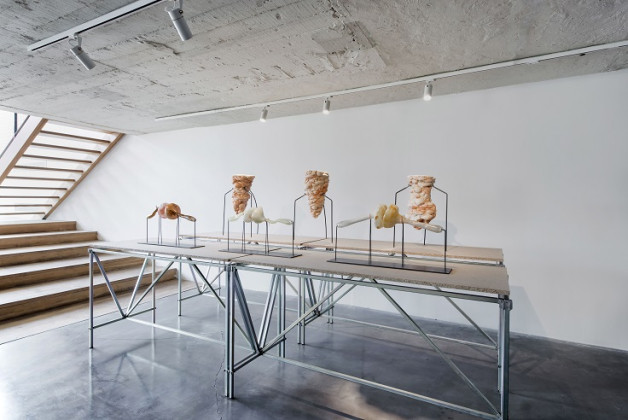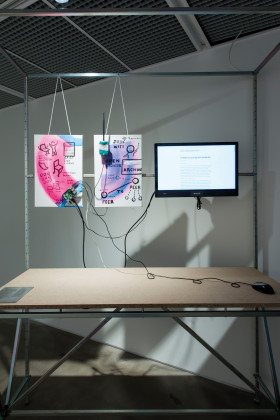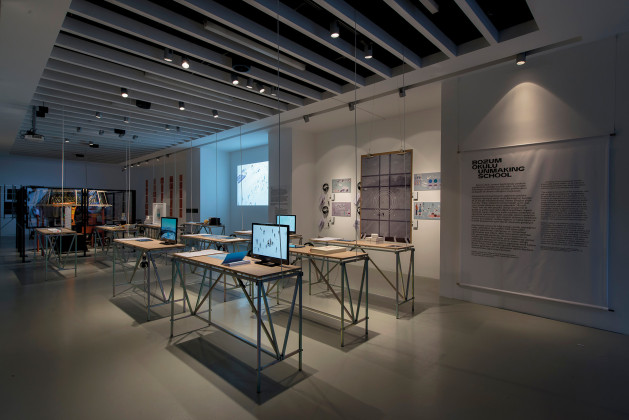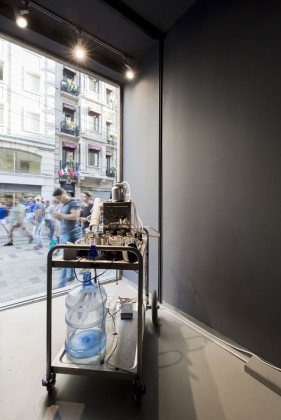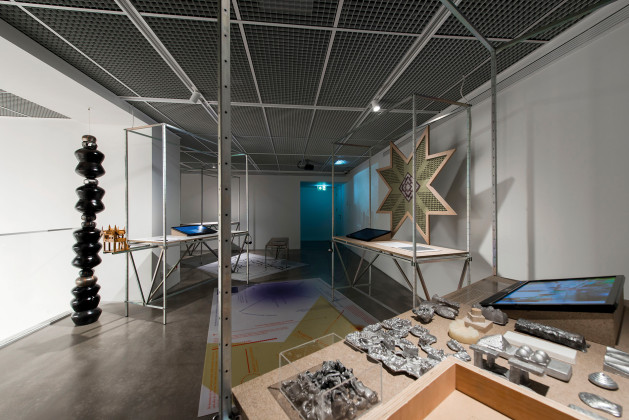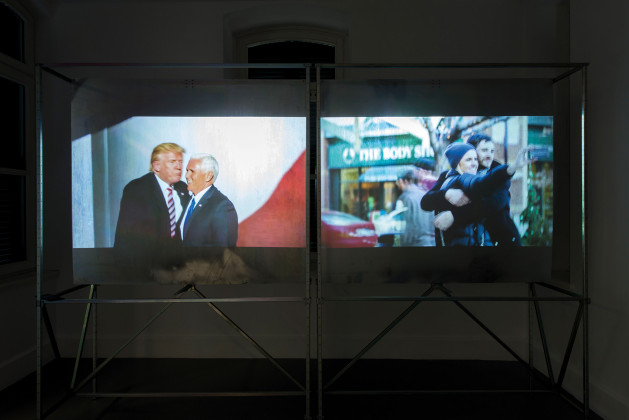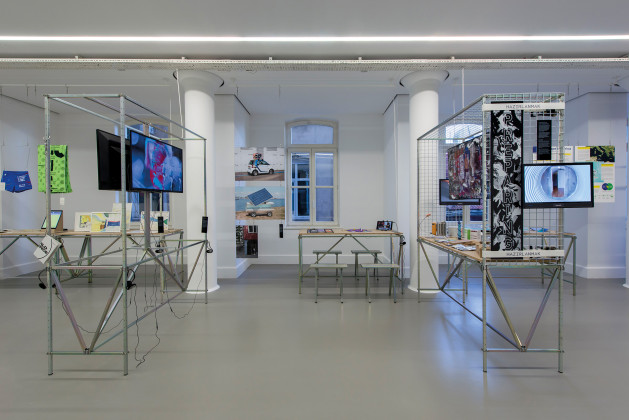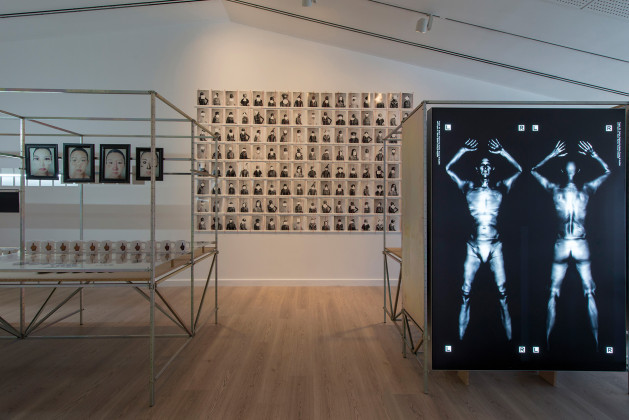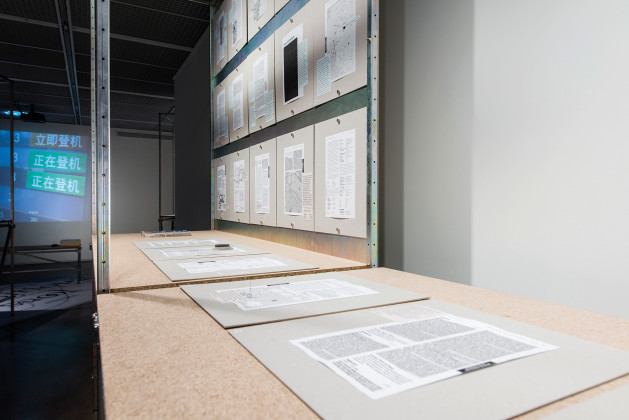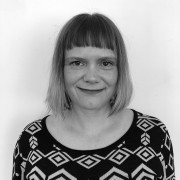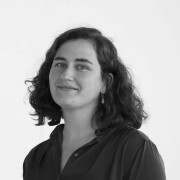Learning From Biennial
Associate curators of 4th Istanbul Design Biennial Nadine Botha and Vera Sacchetti talks to XXI about the theme of "A School of Schools", selected projects and public program.
Ezgi Tezcan: The title of the 4th Istanbul Design Biennial is “A School of Schools” and this is a very strong statement with the intension of questioning design education. The biennial itself is envisioned and designed as a learning process. What was your original motivation and how has this process evolved?
Nadine Botha: We wanted to initiate a conversation around design education, but we realized that in order to do this, we needed to think about what design is for and why we are making so many designs. Why this is important for talking about design education, is that in design schools we are making more and more designs but we do not know where design is going. We also wanted to question the education system as a whole, broader than just design education. Big changes are happening in the world at the moment. For one thing, we have an abundance of information as we have never seen before, and yet at the same time, a post-truth era in which everything must be verified, even previously unquestioned facts. Machines are taking over more and more jobs, and our throwaway society needs to reconsider its relationship with materials. Basing traditional education on content and facts needs to evolve and we should start thinking about new skills, new subjects and new ways dealing with information abundance, post-truth, intelligent machines and material scarcity. As Judith Sengh demonstrated in her project, School of Fluid Measures, learning should be less about knowing or memorising what something is than understanding how it continuously changes in relation to something else. Our intention was to put these issues forward in A School of Schools. We didn’t want to prescribe answers or solutions but rather provoke curiosity and conversations with the works presented. Because as we all know, traditional education teaches by telling students what to think rather than students learning how to think. This is why in curation, we wanted to invite visitors to become active participants in the exhibition – engaging with, questioning and doubting the projects – not just accepting what the exhibitors presented as truth. In the exhibition, you will find lots of conflicting opinions and ideas because this is what we need now: there is no one idea or one solution that is going to move the world forward. We try to celebrate this plurality.
Vera Sacchetti: Plurality is also a characteristic of our times: There is no single answer or single truth anymore. Therefore, we wanted the biennial to reflect that as well. In order to do something contemporary, the only way is to be faithful and truthful to the times we are in now.
ET: “Design as learning” concept was also understandable through the selected projects in venues. There were projects which are mostly the outcomes of an ongoing research instead of finished design products.
VS: Design as learning is one of the things that we are postulating as what design should be. While we were curating the biennial, it became really clear that design is not just about the finished product. A lot of designers find comfort in the finished product because it is what we have become used to thinking as the goal of the design. In conjunction with the idea of questioning and doubting what design is, perhaps we also need to reevaluate the assumed goal of design being a finished product. Perhaps, it is alright that projects are incomplete because they constantly need to evolve to constantly changing parameters. Of course we still need chairs and tables, there is no question about that, but the role of design has to go beyond that. Inspired by the submissions to the open call, the biennial attempts to identify an expanded notion of design that sees many designers and projects going in more critical, relational and speculative directions. These directions are very dependent on a specific time and space, meaning that they don’t necessarily generate beautiful objects, but rather beautiful ideas like the questions and other outcomes that you see in the exhibition.
ET: With this focus on the process of design, there are also some projects that relate to local communities. Planning this biennial as a school that one learns something from, designers also had a chance to come to Istanbul in order to collaborate with local people, and unlearn and reevaluate their own research.
VS: Since the beginning, this was one of the most important goals for the curatorial team. For us, the biennial cannot be a formula that is plonked down on Istanbul in a way that it could just as well have happened here or anywhere else. Interaction with the context is fundamental. Otherwise it would not make any sense to have a biennial here, in Istanbul.
NB: This is also why the open call was so important for us. We wanted to make sure that people who live and work in Turkey could participate and engage in the biennial, as well as ensure that we as curators didn’t simply go back to the same usual designers with expected objects and projects. There were so many responses to the open call, which was indicative of the urgency of the subject and passion that people felt for it. It was a confirmation of our research, as the open call was informed by the ideas we picked up through initial research trips.
VS: The series of research trips went beyond Istanbul. Curator Jan Boelen went on a road trip to six different cities and talked with universities, students, teachers, experts and many others. The response to the open call was a deluge: We had more than seven hundred people applying. This made very clear that the topic was relevant. After receive initial projects in December, there was a second part in which the curators worked with IKSV and the designers with each project, in order to push further connections with the context.
One example of a project had a life before coming to the biennial, and was developed further through the biennial, is Post-Labouratory by Ottonie Von Roeder. She worked with a tea maker in Istanbul to make a little robot that serves tea. It is very specific to the context of Istanbul. Born in the context of Istanbul, another project is Nur Horsanalı’s project Halletmek. It was her Istanbul Bilgi University graduation project, which she developed further to bring elements of her research to life through a video and map. In A School of Schools, this emphasized the idea of learning from our everyday surroundings, from the streets, from other people.
ET: All the venues are clearly expressing an aspect of learning through selected projects. Among all the submission to open call, how did you manage these selections? And you had co-curators for Digestion School and Time School, how did it help you?
NB: The open call originally had eight identified themes and among the responses there weren’t any projects that were fitted only one theme. All of the projects represented multiple interlinked themes. It became impossible to simply structure the biennial by separating the projects into these themes. Through a couple of curatorial workshops, we started pairing the works and creating a community of projects that resulted in clusters of projects around an action point.
For instance, the Unmaking School in Akbank Sanat is clustered around Walter Gropius’ statement that “the school is the servant of the workshop, and will one day be absorbed in it”, and the projects explore how the workshop has evolved beyond a confined physical room into digital and urban spaces. In Yapı Kredi, the Currents School has many projects that represent how design is going beyond the object to be networks and systems. This demonstrates how design is going further than pragmatic design to speculative, critical and relational design. In Arter, the Earth School is explores the contemporary global context. Including climate change, economic precarity, war, constant crisis, capitalism and survival, the projects ask how we can renegotiate our relationship with the environment. In Pera Museum, Scales School is about the systems of knowledge that we create. So-called “facts” like currency, measures, standards, languages and so on, are reasonable fictions that we agree on to facilitate large-scale cooperation. The projects explore how useful these fictions are or if we need to redefine them before we let learning machines optimize them. In SALT Galata, Time School go into our own minds, and our own subjective experiences and perspectives, in comparison to the mechanical clock and how everything feels like it’s speeding up, and knowledge and thought is fragmented. Ils Huygens co-curated the Time School, based on the Z33 research direction that she has been working on with Jan Boelen. In Studio-X, Digestion School is about collective cognition, not just brain as a sight of cognition but stomach as well, and deep ecologies of care. It was co-curated by Margarida Mendes, whose proposal for the open call was a pivotal starting point for the exhibition.
VS: Designing the venues was not a linear process, it was also a complete learning process, an evolution. I would like to say that we also learn a lot from this. The co-curation was also a joint process of conversation and learning between us and Ils and Margarida.
ET: Unlike previous biennials, public programs are organized within the curatorial process. So venues and these programs work together. Why did you choose this way instead of separating them as an extension?
VS: We would like to try, test and implement this idea of an “expanded” notion of the biennial in the same way we dealt with the expanded notion of design. We tried to question the biennial format itself. Of course, we had to have an exhibition as a backbone, but even the exhibition is not presented in one single location. It spreads throughout six existing cultural institutions in Beyoglu and as we said before, “the schools are the classrooms and the corridors are the streets”. So the biennial really gets out of its typical framework. It was very important that, in a spatial way the biennial occupies more than one venue in the city. In a durational way, the biennial also evolves through time.
The public program has been always thought of as an essential part of the biennial. As you have seen since the opening weekend, there are all these things happening at the same time; workshops, lectures, presentations, conversations… The public program seeks to test a variety of formats and tries to reach out to the local community while bringing a lot of international guests. We are collaborating with local universities and local practitioners to reach out to other audiences, while at the same time, all those who applied to our open call as learners can sign up to be part of the biennial in this way. Everybody can sign up and everything is free.
To contribute this extended notion of biennial, we are transcending the physicality of the event as well. We have a website that serves as a platform for a conversation that goes on digitally, on the internet, through a series of articles and publications that are being uploaded over the course of the biennial. We aim to collect a series of reflections on this particular topic of design and design education.
Other formats of note are projects such as Japanese photographer Naho Kubota’s Architecture Schools exhibition which is on display in Taksim Square, and which I think will be very visible here in Istanbul. Kubota portrays the interiors of five architecture schools between Ankara and Istanbul for her on-going series of architecture school interiors; and she also conducted a workshop in Istanbul with students of Bilgi University.
ET: There are particular projects in venues which are focusing on how women’s labor has been understood by society. In your effort to look outside pre-imposed frames and questioning today’s norms, was gender something that you also paid attention to?
VS: A simple observation to make is that two out of the three people in the curatorial team are women, so obviously this was something that we are aware of. In many biennials the majority of work is done by men, but in this biennial more than half of the participants are women. There are also some projects which are questioning what is so-called “women’s” work and “man’s” work.
NB: I wouldn’t say that we intentionally went out to have more women participants. But we were struck immediately that many of the participants are women. With the women’s movement becoming much more outspoken and active in our times, perhaps women are being more agile in adjusting to the changing world, and therefore making more relevant works.
ET: You said earlier in this meeting that you also learned a lot of things out of this biennial process. What is that you learned from the biennial so far?
VS: I definitely learned about new ways of working together. I also learned that this process of questioning and constantly doubting pre-imposed norms and systems, and trying to reframe, revalue and relearn is very exhausting. It is not something that we are used to do. If you don’t have a good support network it is not possible for you to do this kind of constant inquiry. Mostly, I learned from other people, and developed a larger willingness to hear and to listen to others.
NB: I learned so much, and don’t know how to sum it up into a neat one-liner. Most striking for me is what I learned about education, this process that takes up so much time in each of our lives, and yet we never step back to think about where it came from, how it has been constructed, and what impact it has on us. Then the opportunity to observe how design has evolved beyond pragmatism to something new.
But learning from everyone else involved in the biennial was the main thing – working with each other, working with different cultures, and working in very precarious economic times. Taking this learning approach to curating the biennial meant that we as curators didn’t know what the result was going to be, because if you know the outcome what are you learning? It is great to see it all come together in a collaborative bricolage.
Related Content:
-
Learning From Space
Aslı Çiçek talks to XXI about 4th İstanbul Design Biennial's exhibition design and how it was implemented in various spaces.
-
Learning From Change
In conversation with Jan Boelen, the curator of 4th Istanbul Design Biennial on the theme of "A School of Schools." We discussed a variety of issues starting from the making of a design biennial up to design's capacity to respond to changes in the society.
-
We Learnt Everything from the Designers
Learning something new is an exchange. It starts with a humility of not knowing, it grows into a shared challenge, and if stuck to, evolves into the unexpected.
-

4th Istanbul Design Biennial Announces Concept And Open Call
 19.12.2018
19.12.2018




